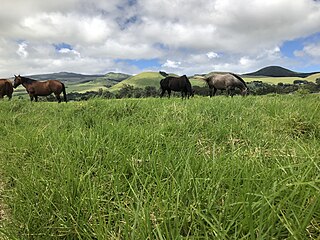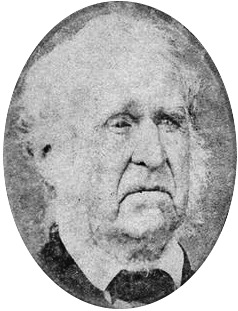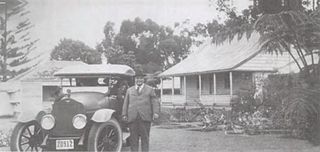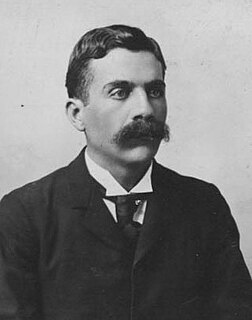Related Research Articles

Waimea is a census-designated place (CDP) in Hawaii County, Hawaii, United States. The population was 7,028 at the 2000 census and 9,212 at the 2010 census. Since each U.S. state cannot have more than one post office of the same name, and there is a post office in Waimea, Kauai County, the official U.S. Post Office designation for Waimea is Kamuela, although this name is only used by the post office, not by locals or the local government. The name Waimea means reddish water.

Mākaha is a census-designated place (CDP) in Honolulu County, Hawaiʻi, United States. It is a town located along the Pacific coast, west of the Mākaha Valley, and at the foot of Mt. Ka'ala in the Wai’anae Mountain Range. It is the last of the leeward towns on O'ahu. North of Mākaha is little development, i.e. no towns, no gas stations, or restaurants. The population of Mākaha was 8,278 at the 2010 census. It is located 35 miles northwest of Honolulu, but is a part of Honolulu County.

A cowboy is an animal herder who tends cattle on ranches in North America, traditionally on horseback, and often performs a multitude of other ranch-related tasks. The historic American cowboy of the late 19th century arose from the vaquero traditions of northern Mexico and became a figure of special significance and legend. A subtype, called a wrangler, specifically tends the horses used to work cattle. In addition to ranch work, some cowboys work for or participate in rodeos. Cowgirls, first defined as such in the late 19th century, had a less-well documented historical role, but in the modern world work at identical tasks and have obtained considerable respect for their achievements. Cattle handlers in many other parts of the world, particularly South America and Australia, perform work similar to the cowboy.

The vaquero is a horse-mounted livestock herder of a tradition that has its roots in the Iberian Peninsula and extensively developed in Mexico from a methodology brought to Latin America from Spain. The vaquero became the foundation for the North American cowboy. The vaqueros of the Americas were the horsemen and cattle herders of New Spain, who first came to California with the Jesuit priest Eusebio Kino in 1687, and later with expeditions in 1769 and the Juan Bautista de Anza expedition in 1774. They were the first cowboys in the region.

Chang Apana (December 26, 1871 – December 8, 1933; traditional Chinese: 鄭阿平; simplified Chinese: 郑阿平; pinyin: Zhèng Āpíng; Wade–Giles: Cheng4 A1p'ing2; Jyutping: Zeng6 Aa3ping4) was a Chinese-Hawaiian member of the Honolulu Police Department, first as an officer, then as a detective. He was acknowledged by Earl Derr Biggers as the inspiration for his fictional Asian detective character, Charlie Chan.

The cuisine of Hawaii incorporates five distinct styles of food, reflecting the diverse food history of settlement and immigration in the Hawaiian Islands.
Sam Choy Sr. is an American chef, restaurateur, and television personality known as a founding contributor of Pacific Rim cuisine.

Parker Ranch is a working cattle ranch on the Island of Hawaii in the U.S. state of Hawaii, now run by a charitable trust.
Armine von Tempski was an American writer and one of Hawaii's best known authors. She was a granddaughter of Gustavus von Tempsky.

John Palmer Parker was the founder of the Parker Ranch on the island of Hawaiʻi in Hawaii. In 2008, he was inducted into the Hall of Great Westerners of the National Cowboy & Western Heritage Museum.

Samuel Parker, known as Kamuela Parker was a major landowner and businessman on the island of Hawaii, heir to the Parker Ranch estate. He was also a leading political figure at a critical time of the history of the Kingdom of Hawaii, serving in its last cabinet.

Henry Nicholas Greenwell was an English merchant credited with establishing Kona coffee as an internationally known brand. His family became major land-holders in the Kona District of the island of Hawaiʻi. The Greenwell Store is now a museum and historical center.

Richard Palmer Kaleioku Smart (1913–1992) was a musical theatre actor and singer who became owner of the largest private ranch in Hawaii.

James Frank Woods was a major landowner during the Kingdom of Hawaii who was related to royalty and many civil leaders.

Alfred Wellington Carter was a lawyer and judge in the Republic of Hawaii and the Territory of Hawaii who managed the Parker Ranch.

A ranch is an area of land, including various structures, given primarily to ranching, the practice of raising grazing livestock such as cattle and sheep. It is a subtype of a farm. These terms are most often applied to livestock-raising operations in Mexico, the Western United States and Western Canada, though there are ranches in other areas. People who own or operate a ranch are called ranchers, cattlemen, or stockgrowers. Ranching is also a method used to raise less common livestock such as horses, elk, American bison or even ostrich, emu, and alpaca.

Spanish immigration to Hawaii began in 1907 when the Hawaiian government and the Hawaiian Sugar Planters' Association (HSPA) decided to supplement their ongoing importation of Portuguese workers to Hawaii with workers recruited from Spain. Importation of Spanish laborers, along with their families, continued until 1913, at which time more than 9,000 Spanish immigrants had been brought in, most recruited to work primarily on the Hawaiian sugarcane plantations.

Native Hawaiian cuisine refers to the traditional Hawaiian foods that predate contact with Europeans and immigration from East and Southeast Asia. The cuisine consisted of a mix of indigenous plants and animals as well as plants and animals introduced by Polynesian voyagers, who became the Native Hawaiians.

Kapiʻolani was the queen of the Kingdom of Hawaiʻi as the consort of Mōʻī (king) Kalākaua, who reigned from 1874 to 1891 until Mōʻī's death when she became known as the Dowager Queen Kapiʻolani. Deeply interested in the health and welfare of Native Hawaiians, Kapiʻolani established the Kapiʻolani Home for Girls, for the education of the daughters of residents of the Kalaupapa Leprosy Settlement, and the Kapiʻolani Maternity Home, where Hawaiian mothers and newborns could receive care.
References
- 1 2 3 Adams, Wanda A. (2006). The Island Plate: 150 Years of Recipes and Food Lore from the Honolulu Advertiser. Island Heritage Publishing. p. 98.
- ↑ Choy, Sam (2003). A Hawaiian lūʻau with Sam Choy and the Makaha Sons. Lynn Cook, Mākaha Sons. Honolulu, Hawaii: Mutual Pub. p. 63. ISBN 1-56647-573-2. OCLC 53945683.
- ↑ Barnes, Phil (2013). Concise history of the hawaiian islands. [Place of publication not identified]: Petroglyph Pr Ltd. pp. 27–28. ISBN 978-0-912180-70-0. OCLC 835374280.
- ↑ Studies in the economic history of the Pacific Rim. Sally M. Miller, A. J. H. Latham, Dennis Owen Flynn. London: Routledge. 1998. p. 83. ISBN 0-415-14819-7. OCLC 35986409.
{{cite book}}: CS1 maint: others (link)